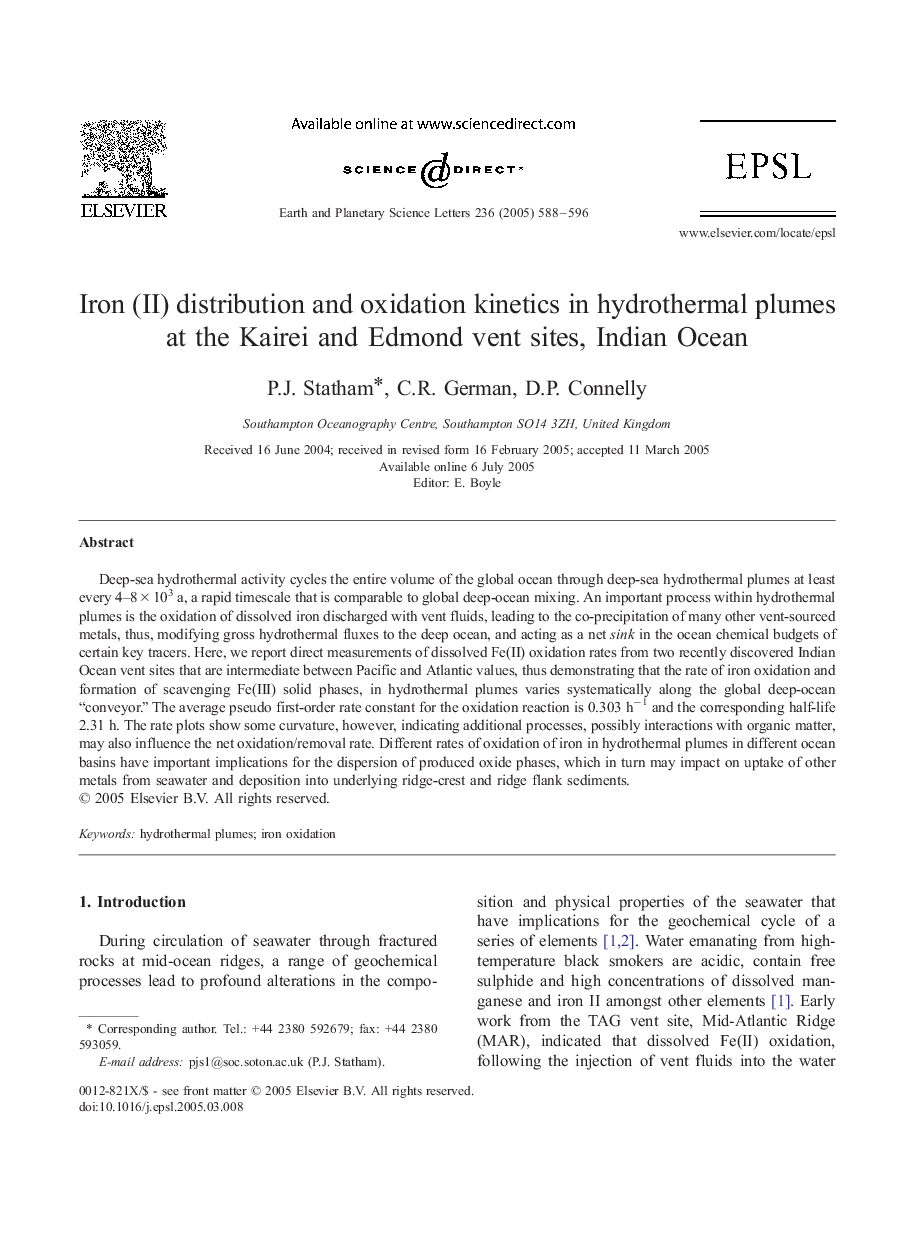| Article ID | Journal | Published Year | Pages | File Type |
|---|---|---|---|---|
| 9522658 | Earth and Planetary Science Letters | 2005 | 9 Pages |
Abstract
Deep-sea hydrothermal activity cycles the entire volume of the global ocean through deep-sea hydrothermal plumes at least every 4-8Â ÃÂ 103 a, a rapid timescale that is comparable to global deep-ocean mixing. An important process within hydrothermal plumes is the oxidation of dissolved iron discharged with vent fluids, leading to the co-precipitation of many other vent-sourced metals, thus, modifying gross hydrothermal fluxes to the deep ocean, and acting as a net sink in the ocean chemical budgets of certain key tracers. Here, we report direct measurements of dissolved Fe(II) oxidation rates from two recently discovered Indian Ocean vent sites that are intermediate between Pacific and Atlantic values, thus demonstrating that the rate of iron oxidation and formation of scavenging Fe(III) solid phases, in hydrothermal plumes varies systematically along the global deep-ocean “conveyor.” The average pseudo first-order rate constant for the oxidation reaction is 0.303 hâ1 and the corresponding half-life 2.31 h. The rate plots show some curvature, however, indicating additional processes, possibly interactions with organic matter, may also influence the net oxidation/removal rate. Different rates of oxidation of iron in hydrothermal plumes in different ocean basins have important implications for the dispersion of produced oxide phases, which in turn may impact on uptake of other metals from seawater and deposition into underlying ridge-crest and ridge flank sediments.
Keywords
Related Topics
Physical Sciences and Engineering
Earth and Planetary Sciences
Earth and Planetary Sciences (General)
Authors
P.J. Statham, C.R. German, D.P. Connelly,
